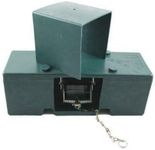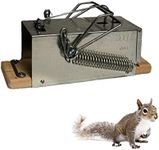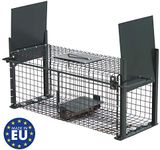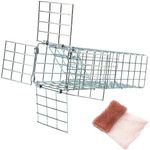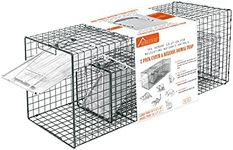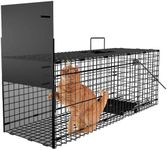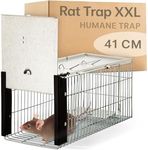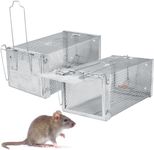Buying Guide for the Best Squirrel Traps
Choosing the right squirrel trap involves understanding the different types of traps available and how they work. It's important to consider the environment where the trap will be used, the size of the squirrel population, and your personal preferences regarding humane treatment. By evaluating these factors, you can select a trap that effectively addresses your squirrel problem while aligning with your ethical considerations.Type of TrapThe type of trap is crucial because it determines how the squirrel will be captured. There are generally two main types: live traps and lethal traps. Live traps capture the squirrel without harming it, allowing for relocation, while lethal traps are designed to kill the squirrel. If you prefer a humane approach, a live trap is the way to go. However, if you're dealing with a large infestation and need a more permanent solution, a lethal trap might be more effective. Consider your ethical stance and the severity of the problem when choosing the type.
Size of TrapThe size of the trap is important to ensure it can effectively capture the squirrel. Traps that are too small may not work properly, while traps that are too large might not trigger correctly. Squirrels are generally small to medium-sized animals, so a trap that is specifically designed for squirrels or similar-sized animals is ideal. If you're unsure, look for traps that specify they are suitable for squirrels. Consider the size of the squirrels in your area and choose a trap that can comfortably accommodate them.
Material and DurabilityThe material and durability of the trap affect its longevity and effectiveness. Traps made from sturdy materials like galvanized steel are more durable and can withstand outdoor conditions better than those made from plastic or thin metal. If you plan to use the trap outdoors or in harsh weather conditions, opt for a trap made from durable materials. Consider how long you plan to use the trap and the environmental conditions it will face when making your choice.
Ease of UseEase of use is an important factor, especially if you're not experienced with setting traps. Some traps are more complex and require careful setup, while others are straightforward and easy to use. If you're new to trapping, look for a trap with simple instructions and minimal setup requirements. Consider how comfortable you are with setting traps and choose one that matches your skill level.
Safety FeaturesSafety features are important to prevent accidental injury to humans or non-target animals. Some traps come with safety mechanisms to prevent accidental triggering or to protect your hands during setup. If you have pets or children, or if the trap will be placed in a high-traffic area, prioritize traps with robust safety features. Consider the environment where the trap will be used and the potential risks to non-target animals or people.




